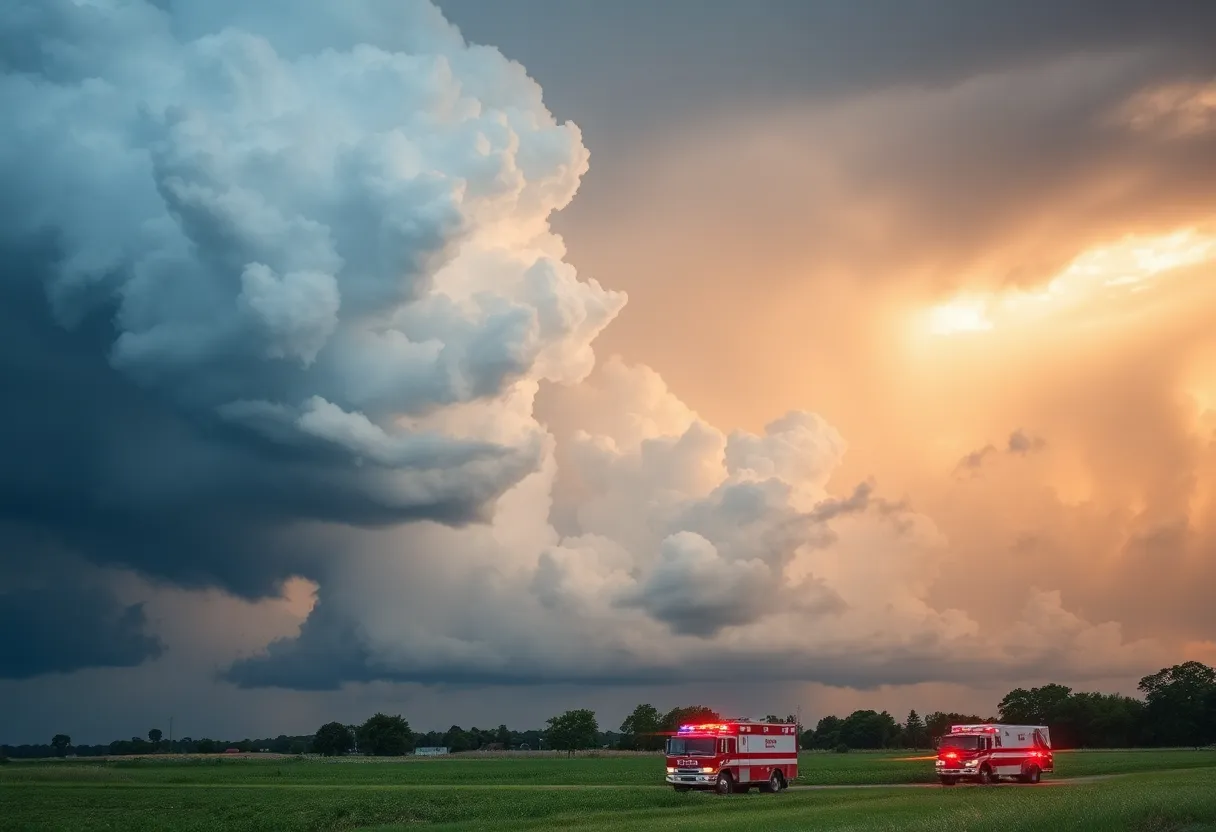News Summary
In preparation for severe weather and flash flooding, Governor Greg Abbott has activated state emergency resources and mobilized rescue teams across Texas. The National Weather Service warns of heavy rainfall that could impact several regions, prompting local authorities to ensure community safety. Following past flooding events that claimed lives, the state emphasizes its readiness to support affected areas. Ongoing discussions regarding the efficacy of emergency notifications and forecast accuracy have emerged amidst these preparations.
AUSTIN, Texas — Governor Greg Abbott has activated state emergency response resources in anticipation of severe weather and flash flooding threats expected to impact various regions of Texas over the weekend. This directive was issued on Friday to the Texas Division of Emergency Management (TDEM), which is mobilizing swiftwater rescue teams and other resources to assist local authorities as they prepare for potential storms.
The National Weather Service (NWS) is forecasting heavy rainfall that may lead to flash flooding across areas including Northwest Texas, far West Texas, North Texas, the Big Country, Permian Basin, Concho Valley, and Hill Country. The severe weather is expected to begin overnight and continue through the weekend. Residents have been advised to monitor local conditions closely, with additional resources made available for safety and emergency response.
In response to recent flooding events in Texas that resulted in at least 81 fatalities, the governor emphasized that the state is prepared to deploy all necessary resources to support affected communities. Currently, TDEM has activated Texas A&M Task Force 1 swiftwater rescue boat squads to assist local storm response operations, focusing on areas already impacted by flooding.
Texans are encouraged to stay informed about road conditions through DriveTexas.org and to seek flood safety information via TexasReady.gov. Ongoing operations are already in place in flood-impacted areas, with local officials working to ensure community safety and emergency preparedness.
The severe weather comes on the heels of previous flash flooding incidents that raised criticisms regarding the forecasting accuracy of the NWS. Some officials cited that rainfall predictions prior to the flooding were underestimated, which may have contributed to the scale of disaster experienced. Calls for an investigation into the impact of budget cuts and staffing reductions at the NWS have surfaced, with critics arguing these changes have hindered effective communication during emergencies.
Despite claims of forecast inaccuracies, independent meteorologists maintain that NWS warnings preceding the flooding were timely and based on the most accurate data available at the time. The challenges associated with predicting extreme rain events, especially in regions referred to as “flash flood alley,” were reiterated by meteorologists stressing the difficulties of precise location predictions of rainfall.
The recent flood disaster also highlighted communication gaps, as many displaced residents received emergency notifications while they were asleep, which may have hindered their ability to respond quickly. Even though the NWS issued flash flood watches for affected areas, the alarm raised was not enough to avert significant loss of life and property damage.
Further investigation into operational effectiveness at the San Antonio weather forecasting office revealed staffing issues, with key leadership positions currently unfilled. Nonetheless, the office reportedly had adequate meteorological staffing in place for the emergency response. Officials expressed mixed feedback on the NWS alerts, with many appreciating the warnings while others felt the severity of the storm was not fully communicated.
Amid significant staffing reductions within the NWS—over 600 employees laid off since spring—Texas weather offices are still considered relatively well-staffed compared to some counterparts nationwide. Nevertheless, the recent events have renewed discussions regarding the efficacy of emergency notification systems, prompting local officials to assess and enhance these systems for better community alerts in the future.
Forecast insights reveal that stalled storms and remnants of Tropical Storm Barry are contributing factors to the extreme rainfall expected in Texas. With severe weather on the horizon, emergency management preparations are crucial, with alerts being disseminated through various platforms including wireless emergency alerts and storm updates.
Deeper Dive: News & Info About This Topic
HERE Resources
Georgetown Animal Shelters Merge Amid Flood Crisis
Mayor DeLisle Critiques Travis County’s Flood Response
Texas Unites in Support for Flood Victims as Death Toll Surpasses 120
Catastrophic Flooding Hits Central Texas
Georgetown Community Unites for Flood Recovery Efforts
Georgetown Faces Flash Flooding Challenges
Flash Floods Devastate Kerr County, Texas
Texas Hill Country Devastated by Flooding
Central Texas Communities Unite for Flood Relief Efforts
Georgetown Schools Support Community During Flood Crisis
Additional Resources
- Austin Statesman
- Wikipedia: Austin, Texas
- FOX 7 Austin
- Google Search: Texas Floods 2025
- KHOU Video
- Google Scholar: Severe Weather Texas
- CBS News
- Encyclopedia Britannica: Severe Weather
- NBC News
- Google News: National Weather Service Cuts 2025
Author: STAFF HERE GEORGETOWN
The GEORGETOWN STAFF WRITER represents the experienced team at HEREgeorgetown.com, your go-to source for actionable local news and information in Georgetown, Williamson County, and beyond. Specializing in "news you can use," we cover essential topics like product reviews for personal and business needs, local business directories, politics, real estate trends, neighborhood insights, and state news affecting the area—with deep expertise drawn from years of dedicated reporting and strong community input, including local press releases and business updates. We deliver top reporting on high-value events such as the Red Poppy Festival, Georgetown Swirl, and Christmas Stroll. Our coverage extends to key organizations like the Georgetown Chamber of Commerce and the Downtown Georgetown Association, plus leading businesses in manufacturing and tourism that power the local economy such as local wineries and historic downtown shops. As part of the broader HERE network, including HEREaustin.com, HEREcollegestation.com, HEREdallas.com, HEREhouston.com, HEREgeorgetown.com, and HEREsanantonio.com, we provide comprehensive, credible insights into Texas's dynamic landscape.






